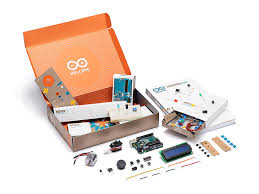For enthusiasts interested in the world of electronics and programming, the Arduino Starter Kit offers a perfect entry point. This comprehensive kit contains a variety of components that allow beginners to explore and create innovative projects. In this article, we will delve into the components included in the Arduino Starter Kit and discuss their uses and functionalities.
What is the Arduino Starter Kit?
The Arduino Starter Kit is a versatile package designed to introduce individuals to electronics and programming using the Arduino platform. It includes an Arduino board, various sensors, actuators, and other components necessary to build a wide range of projects. The kit is suitable for hobbyists, students, and anyone with an interest in learning more about electronics and programming.
For those looking to purchase the kit, you can find the Arduino Starter Kit amazon as a convenient option.
Key Components of the Arduino Starter Kit
The Arduino Starter Kit typically includes the following components:
1. Arduino Uno Board
The heart of the kit, the Arduino Uno board, is a microcontroller that can be programmed to perform a variety of tasks. It features digital and analog input/output pins, a USB connection for programming, and a power jack. The board acts as the central hub for connecting and controlling other components.
2. Breadboard
A breadboard is a critical component for prototyping and testing circuits without soldering. It allows you to easily insert and connect components, making it simple to experiment with different configurations and designs.
3. Resistors and Capacitors
Resistors and capacitors are fundamental electronic components used to manage voltage and current in a circuit. Resistors limit current flow, while capacitors store and release electrical energy. These components are essential for building functional circuits and learning about basic electronics.
4. LEDs
Light Emitting Diodes (LEDs) are versatile components used to indicate the status of a circuit or project. The kit usually includes several LEDs in different colors. By controlling the current flowing through them, you can create visual signals or indicators.
5. Sensors
Sensors convert physical phenomena (such as temperature, light, or motion) into electrical signals that can be read by the Arduino board. Common sensors in the kit include temperature sensors, light sensors, and tilt sensors. These components enable projects that interact with the environment.
6. Servo Motor
The servo motor is a rotary actuator that allows for precise control of angular position. It is commonly used in robotics and automation projects to control movement and position. The kit usually includes a small servo motor for experimentation.
7. Jumper Wires
Jumper wires are used to connect components on the breadboard and to the Arduino board. They come in different lengths and are color-coded for easy identification. Jumper wires are essential for building circuits and establishing connections between components.
Creating Projects with the Arduino Starter Kit
With the components provided in the Arduino Starter Kit, you can create a wide range of projects. Here are a few examples:
- LED Blink: A simple project that involves turning an LED on and off in a loop, introducing basic programming and circuit concepts.
- Temperature Sensor: Measure and display temperature data using a temperature sensor and an LCD display.
- Light-activated Alarm: Use a light sensor to trigger an alarm or LED indicator when light levels change.
- Servo Control: Experiment with controlling the position and movement of a servo motor using potentiometers or buttons.
Conclusion
The Arduino Starter Kit is a valuable resource for anyone looking to explore the world of electronics and programming. With its diverse array of components, the kit offers endless possibilities for learning and creativity. Whether you are a beginner or an experienced maker, the Arduino Starter Kit provides the tools and inspiration to bring your ideas to life.

